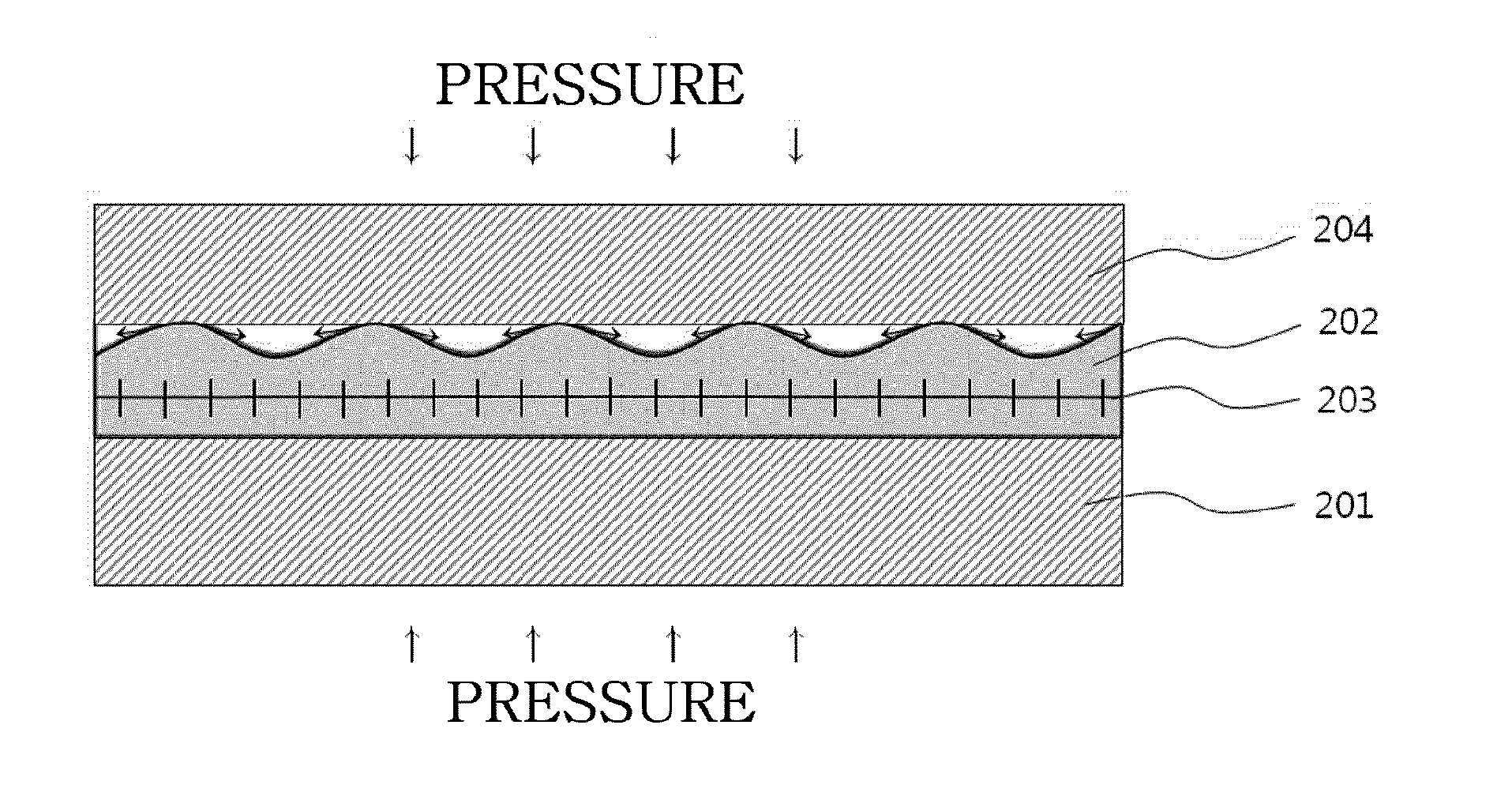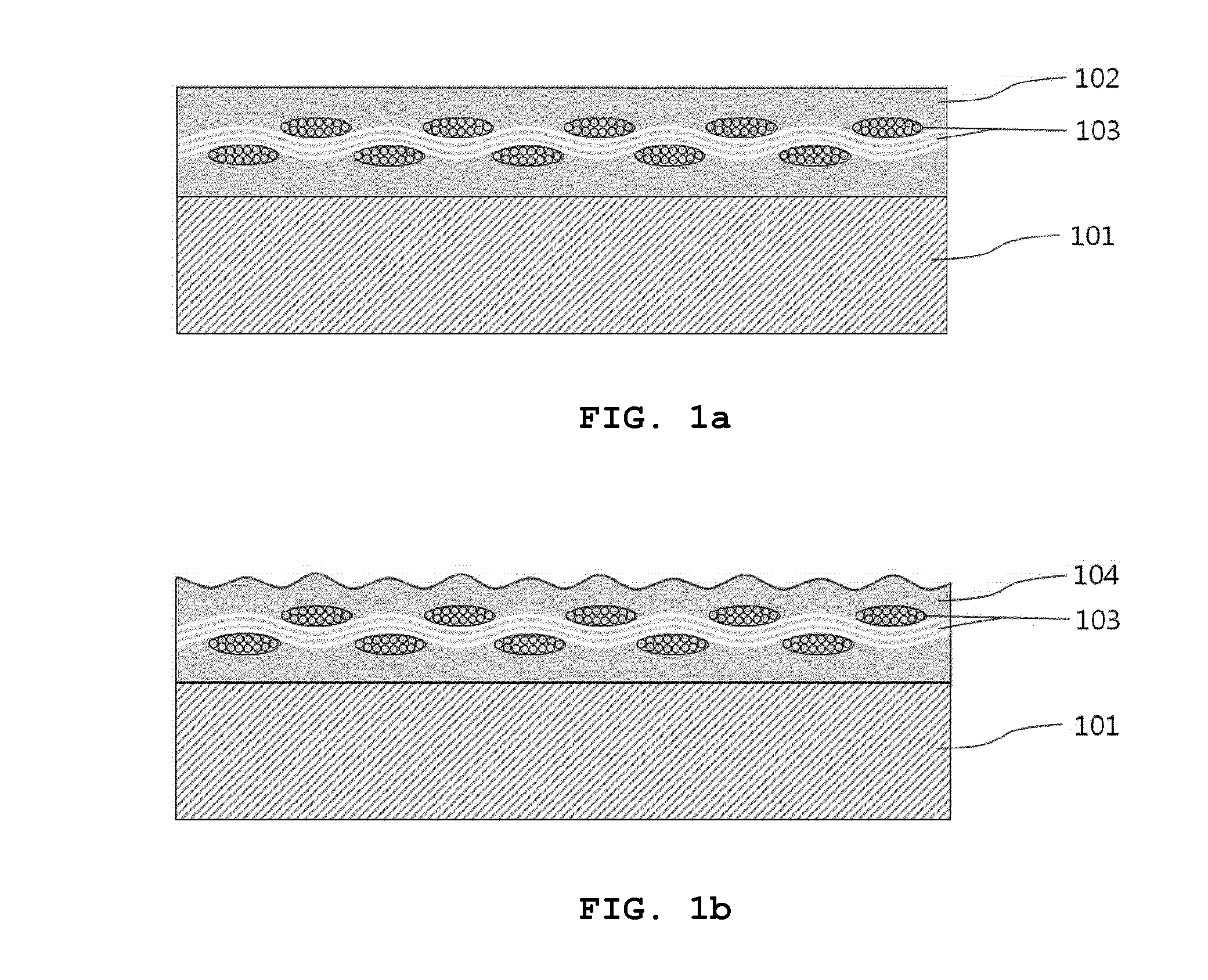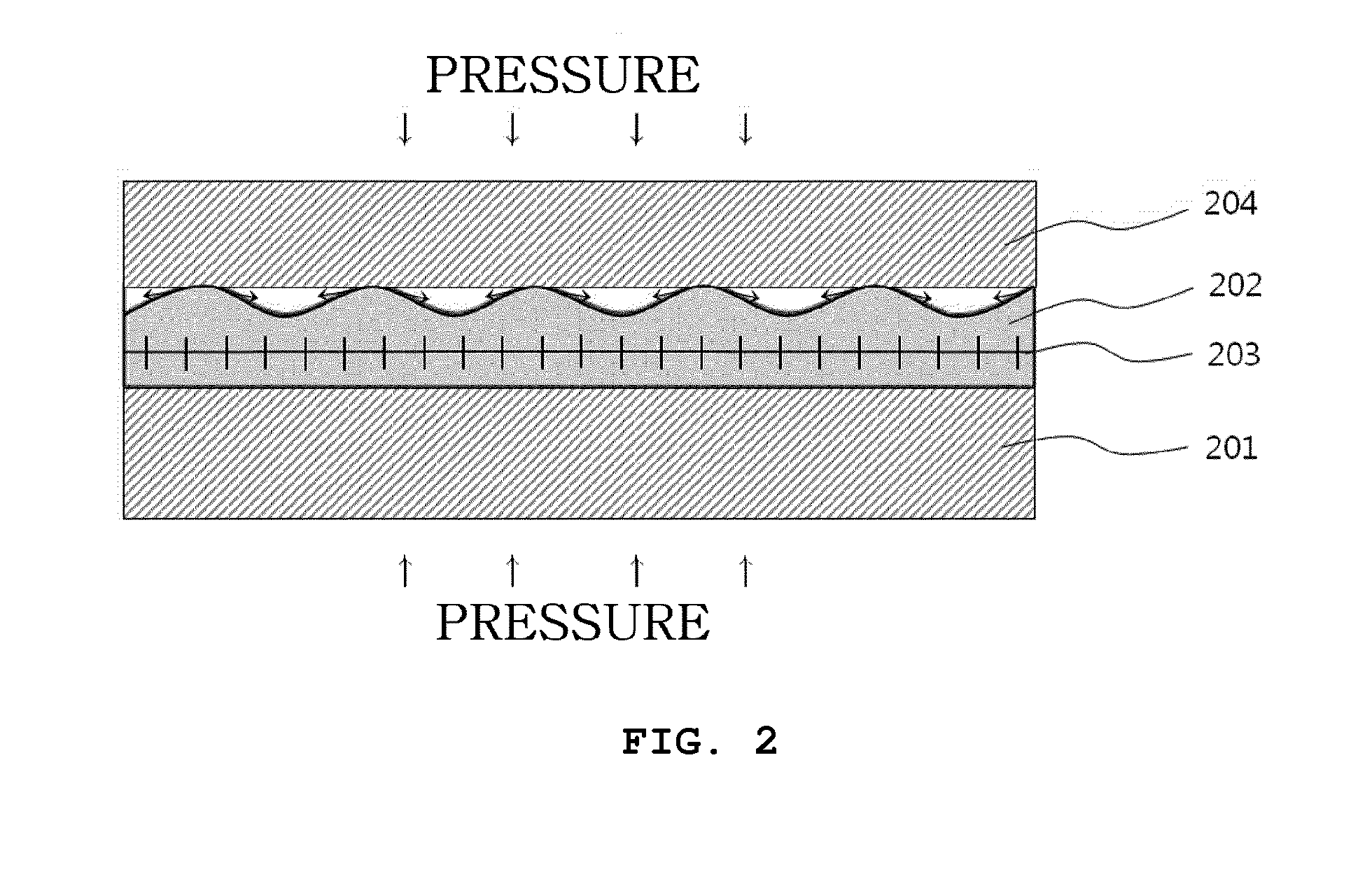Method of manufacturing colorless transparent polyimide film having impregnated glass fabric and of flattening surface thereof
- Summary
- Abstract
- Description
- Claims
- Application Information
AI Technical Summary
Benefits of technology
Problems solved by technology
Method used
Image
Examples
example 2
Flattening of Polyimide Film Using Rollers
[0124]A polyamic acid mixed solution was prepared in the same manner as in Example 1, after which a glass fabric was placed on a support and then uniformly impregnated with the polyamic acid mixed solution.
[0125]The glass fabric impregnated with the polyamic acid mixed solution and the support were placed together in an environmental chamber, and the inner temperature of the chamber was increased from room temperature to 50° C. at a rate of 5° C. / min, maintained at 50° C. for 5 min, increased from 50° C. to 110° C. at a rate of 2.5° C. / min and then maintained at 110° C. for 3 hr, and the solvent was thus evaporated, thereby forming a polyamic acid film.
[0126]The colorless transparent polyamic acid film having impregnated glass fabric was heated from 110° C. to 170° C. at a rate of 0.4° C. / min, further heated from 170° C. to 250° C. at a rate of 1° C. / min, and maintained at 250° C. for 30 min, and thereby the polyamic acid film was subjected ...
example 3
Flattening of Polyimide Film Using Two Flattening Steps
[0131]A polyamic acid film was formed in the same manner as in Example 2.
[0132]The polyamic acid film was separated from the support and located between a pair of rollers having built-in heaters with a surface roughness of 2 nm (RMS) and a diameter of 20 cm. The rollers were heated to 80° C., and the spacing between the rollers was adjusted and a pressure of 3 MPa was applied perpendicular to the contact surfaces between the rollers and the colorless transparent polyamic acid film having impregnated glass fabric, and the colorless transparent polyamic acid film having impregnated glass fabric was passed between the pair of rollers which were rotated in opposite directions around the rotating shafts at a speed of 0.1 revolutions / sec, thereby flattening the surface of the polyamic acid film having impregnated glass fabric (a first flattening step).
[0133]The flattened colorless transparent polyamic acid film having impregnated glas...
PUM
| Property | Measurement | Unit |
|---|---|---|
| Temperature | aaaaa | aaaaa |
| Surface roughness | aaaaa | aaaaa |
| Pressure | aaaaa | aaaaa |
Abstract
Description
Claims
Application Information
 Login to View More
Login to View More - R&D
- Intellectual Property
- Life Sciences
- Materials
- Tech Scout
- Unparalleled Data Quality
- Higher Quality Content
- 60% Fewer Hallucinations
Browse by: Latest US Patents, China's latest patents, Technical Efficacy Thesaurus, Application Domain, Technology Topic, Popular Technical Reports.
© 2025 PatSnap. All rights reserved.Legal|Privacy policy|Modern Slavery Act Transparency Statement|Sitemap|About US| Contact US: help@patsnap.com



